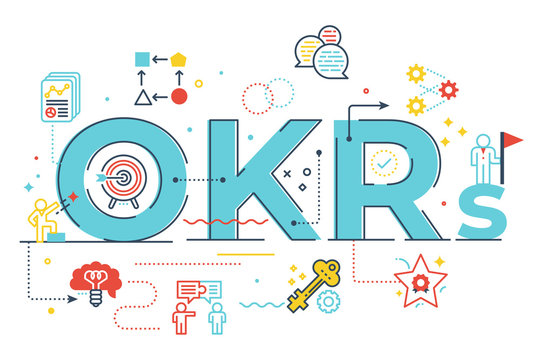Building OKRs (Objectives and Key Results) into your business can transform how you set and achieve goals. This guide will walk you through the process step-by-step, making it accessible even for beginners. By the end, you’ll be ready to implement OKRs effectively, driving success in your organization.
What Are Objectives and Key Results
Understanding the Basics
OKRs, or Objectives and Key Results, are a goal-setting framework that helps organizations define and track objectives and their outcomes. The objective is the “what” you want to achieve, while the key results are the “how” you will measure your progress toward that objective. Originating from Intel and popularized by Google, OKRs have become a cornerstone of modern business management.
Why Use Objectives and Key Results
Using OKRs in your business can provide numerous benefits. They enhance focus by clearly defining priorities, improve alignment across teams, increase transparency, and foster a results-driven culture. At USR INFOTECH, we’ve seen firsthand how OKRs can streamline operations and boost productivity.
Setting Up OKRs: The First Steps
Define Clear Objectives
Begin by identifying your primary goals. Objectives should be ambitious yet achievable, and they must be clear and inspiring. Ask yourself, “What do we want to accomplish?” For instance, an objective might be “Increase customer satisfaction.”
Establish Key Results
For each objective, define 3-5 key results. These should be specific, measurable, and time-bound metrics that indicate progress toward your objective. For example, key results for the objective above could include “Achieve a customer satisfaction score of 90%” or “Reduce customer complaints by 20%.”
Align with Company Vision
Ensure your OKRs align with your company’s vision and long-term goals. This alignment guarantees that every team and individual is working towards the same overarching objectives. At USR INFOTECH, we align our OKRs with our mission to provide cutting-edge OKR solutions to businesses.
Implementing OKRs in Your Business
Communicate the Plan
Once you’ve established your OKRs, communicate them clearly to your entire organization. Use team meetings, emails, or intranet postings to ensure everyone understands the objectives and key results. Transparency is crucial for buy-in and accountability.
Assign Responsibilities
Designate owners for each key result. These individuals will be responsible for tracking progress and driving initiatives that contribute to achieving the key results. This accountability fosters ownership and commitment within your team.
Integrate OKRs into Daily Operations
To make OKRs part of your business routine, integrate them into daily operations. Discuss progress in regular meetings, use OKR software for tracking, and review them frequently. At USR INFOTECH, we recommend using OKR Stars, a robust tool that simplifies OKR management.
Tracking and Reviewing OKRs
Regular Check-ins
Schedule regular check-ins to review progress on OKRs. These could be weekly or bi-weekly meetings where teams discuss their progress, challenges, and adjustments needed. Regular check-ins keep everyone on track and allow for timely interventions.
Use OKRs Software
Leverage OKR software like OKR Stars to track your progress. Such tools provide real-time data, facilitate updates, and generate insightful reports. USR INFOTECH’s clients have found OKR Stars particularly beneficial for maintaining a clear overview of their objectives and results.
Evaluate and Adjust
At the end of each quarter, evaluate your OKRs. Analyze which key results were met, which were not, and why. This reflection helps you understand what worked, what didn’t, and how you can improve in the next cycle.
Best Practices for Successful OKRs
Set Stretch Goals
While your objectives should be achievable, they should also challenge your team. Setting stretch goals motivates teams to push beyond their comfort zones and achieve remarkable results.
Keep It Simple
Avoid overloading your team with too many OKRs. Focus on a few critical objectives to maintain clarity and prevent dilution of effort. Simplicity ensures better focus and higher chances of success.
Foster a Growth Mindset
Encourage a culture of continuous improvement. Celebrate achievements, but also view setbacks as learning opportunities. A growth mindset within your organization will drive innovation and resilience.
Common Challenges and How to Overcome Them
Lack of Buy-In
One common challenge is getting everyone on board. To overcome this, involve your team in the OKR-setting process, explain the benefits, and demonstrate commitment from leadership.
Overambitious Goals
Setting overly ambitious goals can lead to frustration and disengagement. Balance ambition with realism, and ensure your team has the resources needed to achieve their OKRs.
Poor Tracking
Without effective tracking, OKRs lose their impact. Use reliable tools like OKR Stars and establish a routine for regular progress reviews. This structure ensures consistent tracking and accountability.
Conclusion
Implementing OKRs in your business can significantly enhance focus, alignment, and productivity. By following this comprehensive guide, you’ll be well-equipped to set, track, and achieve ambitious goals. Remember, the key to successful OKRs lies in clear objectives, measurable key results, regular tracking, and a commitment to continuous improvement.
At USR INFOTECH, we are dedicated to helping businesses succeed with OKRs. Our OKR Stars software is designed to simplify your OKR management, making it easier to achieve your business goals.











